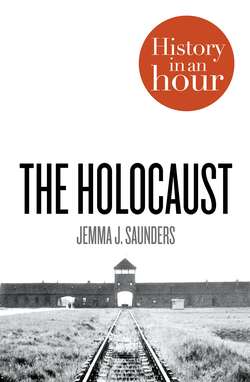Читать книгу The Holocaust: History in an Hour - Jemma Saunders J. - Страница 9
The Nuremberg Laws
ОглавлениеProgressively more discriminatory legislation was passed against Jews in Germany throughout the first two years of Nazi rule, mainly restricting their public rights. The Nuremberg Laws of September 1935, however, went still further in alienating the Jewish population from mainstream society and even dictated on private matters such as relationships.
Under these laws, a system was devised that defined whether a person was Jewish according to their ancestry, rather than their religious beliefs and practices. Anybody with at least three Jewish grandparents, or with just two Jewish grandparents but who was religious or married to a Jew, was deemed wholly Jewish under Nazi law. Everyone categorized as such was stripped of their citizenship, disenfranchised, and forbidden to marry or to have sexual liaisons with non-Jews.
Chart showing the Nuremberg Laws
The Nuremberg Laws also determined who was a Mischling, or part-Jew. Two Jewish grandparents made you a first degree Mischling, while one Jewish grandparent resulted in a second degree categorization. These definitions meant that over 1.5 million people in Germany were considered either full Jews or Mischlinge in 1935 – approximately 2.3 per cent of the population. Many people who had never practised Judaism and who considered themselves ethnically German were now declared members of a supposedly inferior, non-German racial group.
